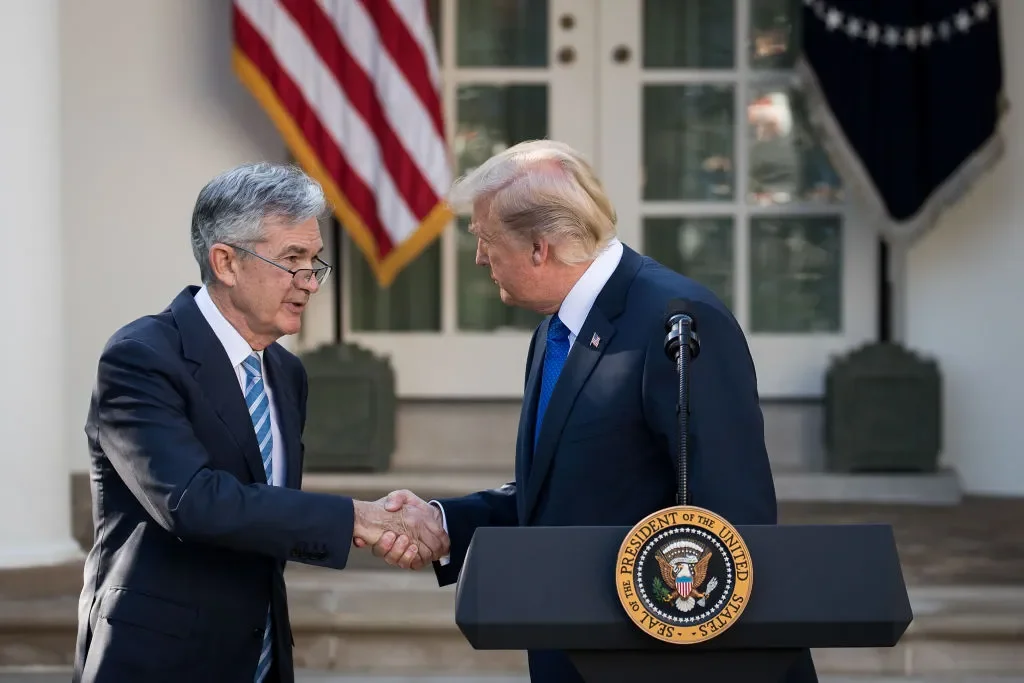
Is Trump’s Economic Gamble Pushing America Towards Chaos?
In an era of deepening economic uncertainty, President Donald Trump’s repeated confrontations with the Federal Reserve have raised alarms among economists and investors alike. His criticisms of Federal Reserve Chairman Jerome Powell have gone beyond mere disagreement to personal attacks, with Trump labeling him an "enemy" and calling the Fed's reports a "complete 'mess!'" These developments provoke serious questions: Is Trump’s approach a reckless gamble, or does it reveal a desperate strategy to salvage his economic legacy?
Historically, presidents have tread carefully in their relationship with central bankers, preserving the Fed's independence to maintain market stability. Yet Trump has consistently deviated from this norm. His recent rhetoric suggests he seeks to influence Fed policies directly to bolster economic growth, driven by climbing interest rates and declining growth rates. However, the consequences could be disastrous.
Trump's implementation of aggressive tariffs—such as a staggering 145 percent duty on goods from China and a 25 percent tariff on Canadian products—has effectively created a 28 percent sales tax on these imports. Experts warn that these tariffs will not only squeeze farmers and small businesses, but they are also projected to cost the average American family nearly $5,000 yearly. Predictably, the repercussions are beginning to manifest: forecasters predict a significant decline in GDP growth and the potential loss of hundreds of thousands of jobs.
The consequences of Trump's economic strategy have not been limited to direct financial burdens. Stock prices have taken a significant hit, with the S&P 500 dropping by 14 percent since Trump’s inauguration. In an unusual move, even the price of Treasury bonds—historically a safe haven for investors—has declined. This shift indicates a growing distrust among global investors regarding the stability of American financial markets and concerns over potential political motives influencing Fed decisions.
Amid these challenges, Trump’s desire for reduced interest rates further complicates the situation. His insistence that Powell act swiftly to cut rates, combined with the threat of dismissal, raises critical concerns about the independence of the Federal Reserve. If Trump were to succeed in removing Powell and appointing a more compliant ally, the market could react swiftly and negatively, prompting a flight of capital from American assets which could skyrocket borrowing costs and stifle growth.
Yet, with the Fed facing the dual challenge of rising inflation and slowing growth, decision-making becomes even trickier. Powell has suggested that the central bank must balance these conflicting pressures and warned of the financial disruptions that could arise in uncertain times. "We would consider how far the economy is from each goal," Powell stated, highlighting the delicate balancing act ahead.
The question remains: Can the Federal Reserve operate without political interference, or is it increasingly becoming a pawn in a larger game of presidential power? Trump's history of dismissing norms raises the specter of chaos, threatening decades of progress in U.S. economic stability. As reality sets in, the question evolves: Can America afford to continue down this path of aggressive tariffs and unprecedented political intervention in monetary policy?
The coming months may reveal whether Trump can navigate this minefield without steeping the nation into economic turmoil. What are your thoughts on this evolving crisis? Share your opinions in the comments below and join the conversation.
Related issues news
What is the term for a fed chair?
Mr. Trump nominated Powell to lead the Fed in 2017, and Powell was re-nominated by President Joe Biden in November 2021. Powell's term as Fed chair ends May 15, 2026. Does Trump have the power to remove Fed Chair Jerome Powell? 07:40. Over the years, Powell has steadfastly defended the central bank's independence.
How long is the Federal Reserve chair term?
The chairman and vice-chairman are appointed to four-year terms and may be reappointed subject to term limitations. Within the System, certain responsibilities are shared between the Board of Governors and the Federal Reserve Banks and Branches, which constitute the System's operating presence around the country.
Who elects the Fed chairman?
By law, the president nominates a Fed chair and two vice chairs for four-year terms. They must be confirmed by the Senate for those positions in a vote distinct from their confirmation as members of the Fed Board of Governors. Jerome Powell was confirmed for a second four-year term as chair on May 12, 2022.
What is Jerome Powell's job?
Chair of the Board of Governors of the Federal Reserve System Jerome Powell speaks during an event hosted by the Economic Club of Chicago on April 16. But Powell's words weren't unlike those of other Fed officials in recent weeks.